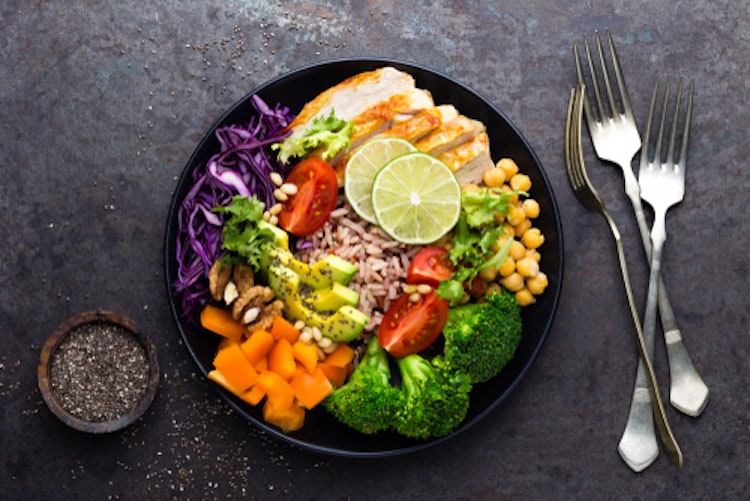The Importance of Selecting Healthy Foods
Healthy eating is more prominent in today’s culture than it was 40 years ago, 10 years ago and even last year. As we get older, we begin to notice more aches and pains and an increased level of difficulty in completing tasks that used to be simple.
Our bodies are fine-tuned instruments and respond to what we put in them. When you have a busy schedule, it’s easy to forget a meal or to resort to quick and convenient food but, far too often, that quick bite can be filled with unhealthy sugar and/or chemicals.
At SALMON Health and Retirement we see the advantages to eating healthy so we ensure our items on our menus are the healthiest available.
The salt, sugar and preservatives in processed foods have no nutritional value for your body. At SALMON, we reduce salt and sugar by making more of our menu items from scratch. In doing this, we substitute salt and sugar with fresh herbs, produce and meats from local farms. We also use cooking techniques such as roasting, braising and poaching to add more flavor to a dish without adding sugar or salt. We are regularly instructing all our cooks and chefs on these techniques.
The effects of eating a healthy diet low in sugar, salt and preservatives can be seen right away — inflammation, blood pressure and cholesterol improves to healthier levels and overall better mood increases.
Our new summer menu has been launched in our communities and we hope you notice there are some items such as quinoa which is a healthier alternative to rice or pasta. Let our culinary staff know your thoughts about the menu and how it is impacting your body. Our main priority is to provide delicious and healthy meals that enrich our Residents’ lives.
Tips for Selecting Healthy Foods:
As we get older, it is particularly important to select foods that supply the correct balance of nutrition to the body. A healthy diet can help fight or avoid infection and disease and keep you active. Here are some things to keep in mind when planning your meals.
My Plate: When deciding what to eat each day, it is helpful to think about what your plate should look like. A healthy plate, for all adults, but especially for seniors, should include fruits and vegetables, healthy grains, and protein. Fruits and vegetables should take up one-half of your plate and include a variety of vegetables from all vegetable subgroups: dark green, starchy, red and orange, and beans and peas. Eat fresh, whole fruits, whenever possible. Include canned, frozen, or dried fruits as well.
Half of the grains on your plate should be whole grains, which contain the entire grain kernel – the bran, germ, and endosperm. Examples of whole grains include whole wheat flour, bulgur (cracked wheat), oatmeal, whole cornmeal, and brown rice.
Food including meat, poultry, seafood, beans and peas, eggs, processed soy products, nuts, and seeds are considered part of the protein foods group. When choosing beef, look for lean cuts such as round or sirloin and ground beef that is at least 92% lean. Trim or drain fat from meat and remove poultry skin.
Be sure to include dairy as part of your meal. Dairy provides nutrients needed, including calcium, vitamin D, potassium and protein. Select low-fat or fat-free milk or yogurt. Use plain low-fat yogurt to top baked potatoes, as a sandwich spread, or in a smoothie.
A Rainbow of Colors: To get all the nutrients you need, you need to eat a variety of foods. Your meal should look like a rainbow representing fruits, vegetables, whole grains, protein, and dairy.
Shop the Perimeter: Whole, unprocessed foods are the healthiest and are found on the perimeter of the grocery store in the produce, meat, and dairy sections. Avoid the center aisles where the packaged, processed foods are found.
Read the Labels: The nutritional facts labels on boxes and cans have a wealth of information about fat, added sugars, and sodium. This information can help you reduce your intake of these three non-nutrients that are unhealthy. Select foods high in fiber and low in sodium or salt. Look for Vitamin D, an important mineral often lacking in our bodies as we age.
How Much Should We Eat?: The amount of food and calories we need each day changes as we get older. To maintain weight, we must eat the right amount of food for our age and body. The Dietary Guidelines for Americans states the number of calories needed per day varies according to activity level. If you are not active, aim for at least 1,600 calories per day. If you are moderately active – walking between 1.5 and 3 miles per day or attending an exercise class each week – you need about 1,800 calories per day. Active seniors should strive for about 2,000 calories each day.
Stay Hydrated: Water is an important nutrient! Drink small amounts of fluids consistently throughout the day so you do not get dehydrated. Water is best, but tea and coffee are OK; just keep fluids with sugar and salt at a minimum, unless your doctor suggests otherwise.
Proper diet and a healthy life are like … well, “love and marriage or a horse and carriage.” Especially for older adults, selecting the right, healthy foods will make a huge difference in the quality and duration of life.




